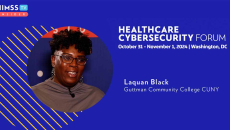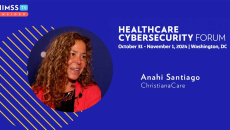Workforce
Cybersecurity In Focus
Scott Alldridge, author of "VisibleOps Cybersecurity: Enhancing Your Cybersecurity Posture with Practical Guidance," discusses Zero Trust and micro-segmentation, leadership’s role, proactive threat management, and more.
Effectively immediately the company has assigned a new chief pharmacy officer and new head of Pharmacy and Consumer Wellness.
Ryan Smith is returning to the Salt Lake City-based health system where he's served two stints already, including two years as CIO from 2020-22.
To hold this hot new position, executives must have a very diverse set of skills. They must encompass clinical and artificial intelligence, though there need not be a balance, says UC San Diego Health Chief Health AI Officer Dr. Karandeep Singh.
No textbook is required when real-life cyber risks are this serious, says Laquan Black, assistant professor of health information technology at Guttman Community College CUNY.
Nearly all 20,000 of the healthcare cluster's staff readily used a new mobile application upon implementation.
This could impact ongoing health system IT modernisation efforts, says New Zealand’s largest trade union, Public Service Association.
Anahi Santiago, chief information security officer at ChristianaCare, says the architecture to develop security programs is shifting as providers manage a larger number of partners in the supply chain and in hospital at home programs.
Public health services in South Australia and Melbourne are set to implement a digital patient flow management platform.
Oklahoma Heart Hospital CIO David Miles and his team made it through in one piece. He offers tips for those facing an electronic health record switch, discusses staff resistance – and talks about what it takes to successfully work with a consulting firm.







